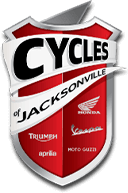LED Lighting: Installation
 After getting your motorcycle, you’ll probably want to customize and why not? It’s your bike and it’s only right that you adjust it so everyone can know who it belongs to. One of the easiest upgrades you can make is to add LED lighting. These small, energy efficient lights help your bike stand out and illuminate its features in green, blue, or red, depending on the vibe you want to give off.
After getting your motorcycle, you’ll probably want to customize and why not? It’s your bike and it’s only right that you adjust it so everyone can know who it belongs to. One of the easiest upgrades you can make is to add LED lighting. These small, energy efficient lights help your bike stand out and illuminate its features in green, blue, or red, depending on the vibe you want to give off.
Installing LEDs yourself is a relatively straightforward process, and although it involves some wiring, it’s about as simple as changing your spark plugs. If you’re looking for a place to start upgrading, LEDs might be perfect for you.
Cycles of Jacksonville understands how important it is to make your bike unique to you and we want to help. Stop by our location in Jacksonville, near St. Augustine and Orlando, Florida for suggestions and advice.
Preparations
Read through all instructions first before starting and avoid shortcuts. This is to help your lights work properly and help you avoid injury.
Make sure you have all the supplies you need, so take note of what’s mentioned in the directions. If your LED strips come with a wiring diagram, use that for best use of your supplies. Also think about if you’ll want to move your lights after installation, as you might want to have masking tape or Velcro.
Test your lights ahead of time to make sure they’re all working properly. You can use a 9-volt battery or even your motorcycle’s battery to test them and return any malfunctioning strips.
Make sure the surfaces you’ll be placing your lights on are clean so they’ll stick properly. And don’t forget to disconnect your motorcycle’s battery.
Lay Out Your LED Strip Placement Plan First
One more thing before you start, decide where you’re going to place your power switch and your light strips. This will help you realize ahead of time if you need more material or if there are any placement problems that need to be resolved. Masking tape will temporarily hold them in place and won’t damage your bike’s paint. Remember to orient the strips so the wires point towards your battery.
Once your light strips are where you want them to be, collect all the wires and plug them into the connector box (or “junction box”) so their wires are condensed into a single positive and negative lead.
Set Up the Wires
Now it’s time to get started.
Step 1: Install Your Lights
Carefully remove the paper backing from your light strips and firmly apply them to your motorcycle. Remember to keep the wiring pointing toward the battery.
Step 2: Cutting and Running Your Wires
Consult your wiring diagram (whether supplied or self-made) for measuring the length of your wires. Trimming is easier than starting over so cut your wires a little long. Once your wires are cut, you can start running them along your motorcycle. WARNING: Do not allow your wires to touch heat sources such as the muffler or snag other parts such as the chain.
Step 3: Solder Your Wires to Your Lights
You can also use butt connectors for this step, but we recommend soldering as it works better and lasts longer. This is where having many wires joined together is helpful.
Step 4: Attach Terminal Connectors
Strip a half-inch of plastic jacket off each lead wire to expose the copper and wrap them around the connection point on the terminal connectors. (Before completing the next part, make sure the switch to the system is turned off.) Attach the positive lead to the positive terminal of the battery and the negative lead to the negative terminal. Connect the positive terminal of your battery to the switch by running the wire along the bike.
If everything has been connected properly, you’ll be able to hit the switch and see all your LEDs light up. If some don’t light up, check the connections. Gather hanging wires and tape or zip-tie them out of the way and out of sight.
LEDs could be your first step to a personally customized bike. If you enjoyed this project and liked the results, swing by Cycles of Jacksonville for advice and assistance to keep the ball rolling. We’re located in Jacksonville, near St. Augustine and Orlando, Florida.
